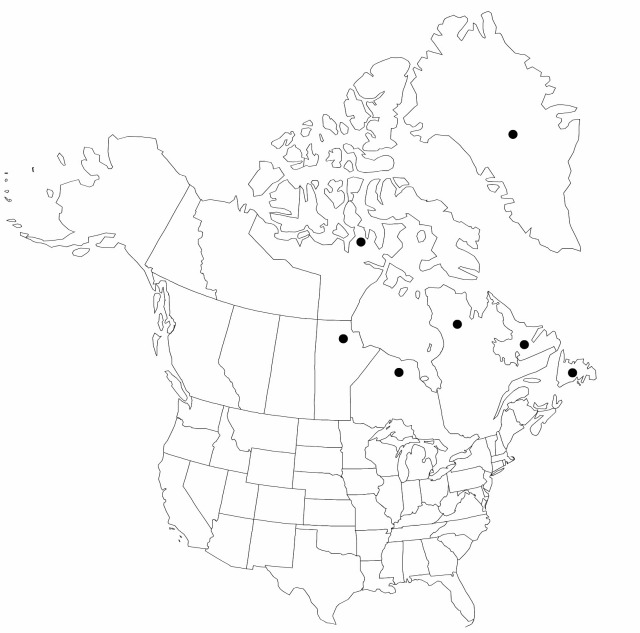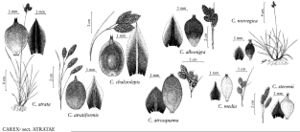Carex norvegica
Fl. Scand. Prodr., 179. 1779.
Plants densely cespitose. Culms 5–35 cm, distally scabrous. Leaves 2–3 mm wide. Inflorescences: proximal bracts shorter than or exceeding inflorescences; spikes globose or oblong, 4–10 × 3–6 mm; lateral 1–2(–3) spikes pistillate, distant, distinct, erect, short-pedunculate; terminal and distal lateral spikes overlapping, sessile, forming dense terminal cluster; terminal spike gynecandrous. Pistillate scales dark brown or black, margins hyaline, ovate, shorter than or equaling and as broad as perigynia; midvein same color as body, inconspicuous. Perigynia ascending, green becoming dark brown or purple-black, veinless, elliptic or obovate, 2–2.5 × 1.25–1.5 mm, often serrulate distally, apex abruptly beaked, papillose; beak 0.2–0.3 mm, shallowly bidentate, smooth or serrulate. Achenes nearly filling body of perigynia. 2n = 56.
Phenology: Fruiting Jul–Aug.
Habitat: Mossy heath, tundra
Elevation: 0–1000 m
Distribution

Greenland, Man., Nfld. and Labr., Nunavut, Ont., Que., Eurasia.
Discussion
Carex norvegica is an amphi-Atlantic species. Carex norvegica subsp. inserrulata is synonymous with subsp. norvegica in this treatment; however, as some differences can be seen between subsp. inserrulata in Greenland and subsp. norvegica in northern Europe, further study is warranted.
Selected References
None.
